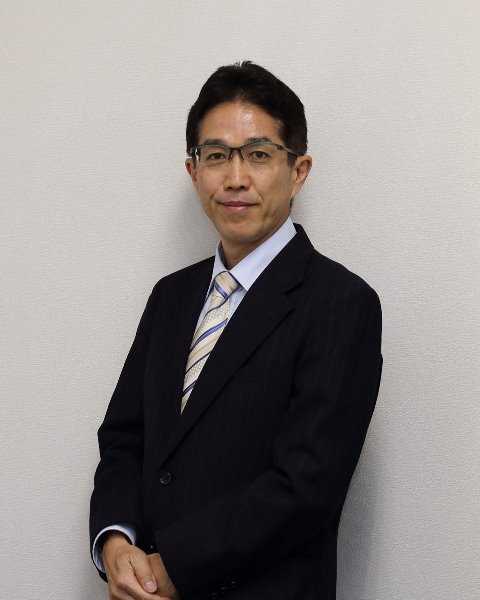PQA 01 - PQA 01 Lung Cancer/Thoracic Malignancies and Diversity, Equity and Inclusion in Healthcare Poster Q&A
2114 - Cost-Utility Analysis of SBRT vs. Surgery for Patients with Stage I Non-Small Cell Lung Cancer in Japan
Sunday, September 29, 2024
2:45 PM - 4:15 PM ET
Location: Hall C
Screen: 16

Hiroshi Onishi, MD, PhD
University of Yamanashi School of Medicine
Chuo-shi 409-3898, Yamanashi
Presenter(s)
H. Onishi1, A. Igarashi2,3, Y. Shioyama4, K. Takayama5, Y. Matsuo6, Y. Matsumo7,8, H. Yamashita9, A. Miyakawa10, H. Matsushita11, M. Aoki12, K. Nihei13, T. Kimura14, R. Koba15, D. Lee16, and K. Ito17; 1University of Yamanashi, Chuo, Japan, 2Yokohama City University School of Medicine, Kanagawa, Japan, 3University of Tokyo, Tokyo, Japan, 4Ion Beam Therapy Center, SAGA HIMAT Foundation, Tosu, Japan, 5Tenri Hospital, Nara, Japan, 6Department of Radiation Oncology and Image-applied therapy, Kyoto University Graduate School of Medicine, Kyoto, Japan, 7Department of Radiation Oncology, Niigata Cancer Center Hospital, Niigata, Japan, 8Niigata Cancer Center Hospital, Niigata, Japan, 9Department of Radiology, The University of Tokyo Hospital, Tokyo, Japan, 10Department of Radiation Oncology, National Hospital Organization Nagoya Medical Center, Nagoya, Japan, 11Department of Radiation Oncology, Tohoku University Graduate School of Medicine, Sendai, Japan, 12Department of Radiation Oncology, Hirosaki University Graduate School of Medicine, Hirosaki, Japan, 13Department of Radiation Oncology, Osaka Medical and Pharmaceutical University, Osaka, Japan, 14Department of Radiation Oncology, Hiroshima University, Hiroshima, Japan, 15Varian Medical Systems, K.K., Tokyo, Japan, 16Varian Medical System, Washington, DC, 17Renagence LLC., Iwate, Japan
Purpose/Objective(s): Stereotactic body radiotherapy (SBRT) for patients with operable stage I non-small cell lung cancer (NSCLC) is less invasive than surgery, but differences in lifetime costs and patient outcomes are not well understood. We aim to conduct a cost-utility analysis of SBRT against surgery for stage I operable NSCLC Japanese patients. Materials/
Methods: A partitioned survival model was constructed using each treatment arms overall survival (OS) and progression-free survival (PFS) data. The data for the SBRT arm was extracted from the Japanese multicenter cohort study that enrolled 678 medically operable patients with stage I NSCLC, and patient registry data was used for the surgery arm. The 5-year OS rate was extracted to be 78.2% for SBRT and 74.8% for surgery from both studies. The 5-year PFS rate was 57.0% for SBRT and 63.4% for surgery. The quality of life values of PFS and progressive disease (PD) were obtained from domestic and overseas literature (PFS: 0.74, PD: 0.65). The time horizon was set to 10 years. The expected costs and the expected quality-adjusted life-years (QALYs) for each treatment group were calculated. All costs were expressed in Japanese yen converted to US dollars (USD).
Results: SBRT was the dominant strategy, reducing treatment costs by USD 4,443.8 and increasing 0.131 QALYs against the surgery. Under the probabilistic sensitivity analysis, the probability of SBRT being dominant and cost-effective was 50.6% and 72.4%, respectively. Under the budget impact analysis, the total saving amount for entire patients with stage I NSCLC in Japan would be USD 6,252,870.0 for whole patients (N=1,407).
Conclusion: SBRT was proven to be a cost-effective option against surgery in patients with medically operable stage I NSCLC in Japan, while large-scale epidemiological studies that reflect the latest clinical realities, such as OS/PFS, will be needed to validate the studys robustness.
Purpose/Objective(s): Stereotactic body radiotherapy (SBRT) for patients with operable stage I non-small cell lung cancer (NSCLC) is less invasive than surgery, but differences in lifetime costs and patient outcomes are not well understood. We aim to conduct a cost-utility analysis of SBRT against surgery for stage I operable NSCLC Japanese patients. Materials/
Methods: A partitioned survival model was constructed using each treatment arms overall survival (OS) and progression-free survival (PFS) data. The data for the SBRT arm was extracted from the Japanese multicenter cohort study that enrolled 678 medically operable patients with stage I NSCLC, and patient registry data was used for the surgery arm. The 5-year OS rate was extracted to be 78.2% for SBRT and 74.8% for surgery from both studies. The 5-year PFS rate was 57.0% for SBRT and 63.4% for surgery. The quality of life values of PFS and progressive disease (PD) were obtained from domestic and overseas literature (PFS: 0.74, PD: 0.65). The time horizon was set to 10 years. The expected costs and the expected quality-adjusted life-years (QALYs) for each treatment group were calculated. All costs were expressed in Japanese yen converted to US dollars (USD).
Results: SBRT was the dominant strategy, reducing treatment costs by USD 4,443.8 and increasing 0.131 QALYs against the surgery. Under the probabilistic sensitivity analysis, the probability of SBRT being dominant and cost-effective was 50.6% and 72.4%, respectively. Under the budget impact analysis, the total saving amount for entire patients with stage I NSCLC in Japan would be USD 6,252,870.0 for whole patients (N=1,407).
Conclusion: SBRT was proven to be a cost-effective option against surgery in patients with medically operable stage I NSCLC in Japan, while large-scale epidemiological studies that reflect the latest clinical realities, such as OS/PFS, will be needed to validate the studys robustness.
